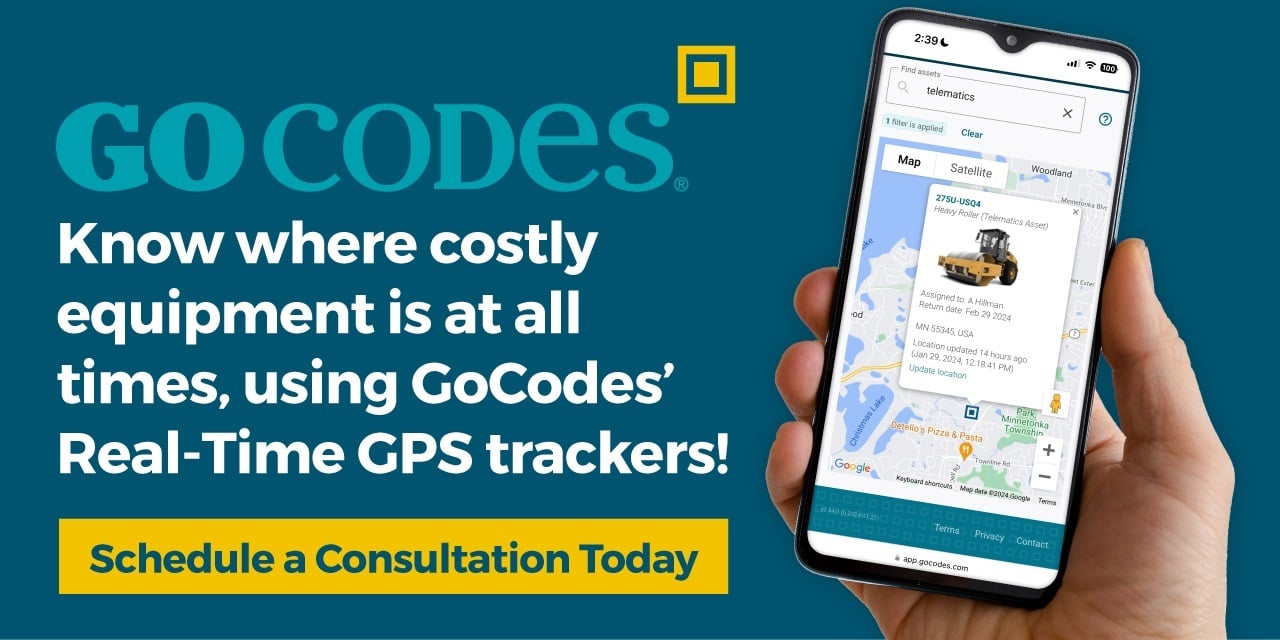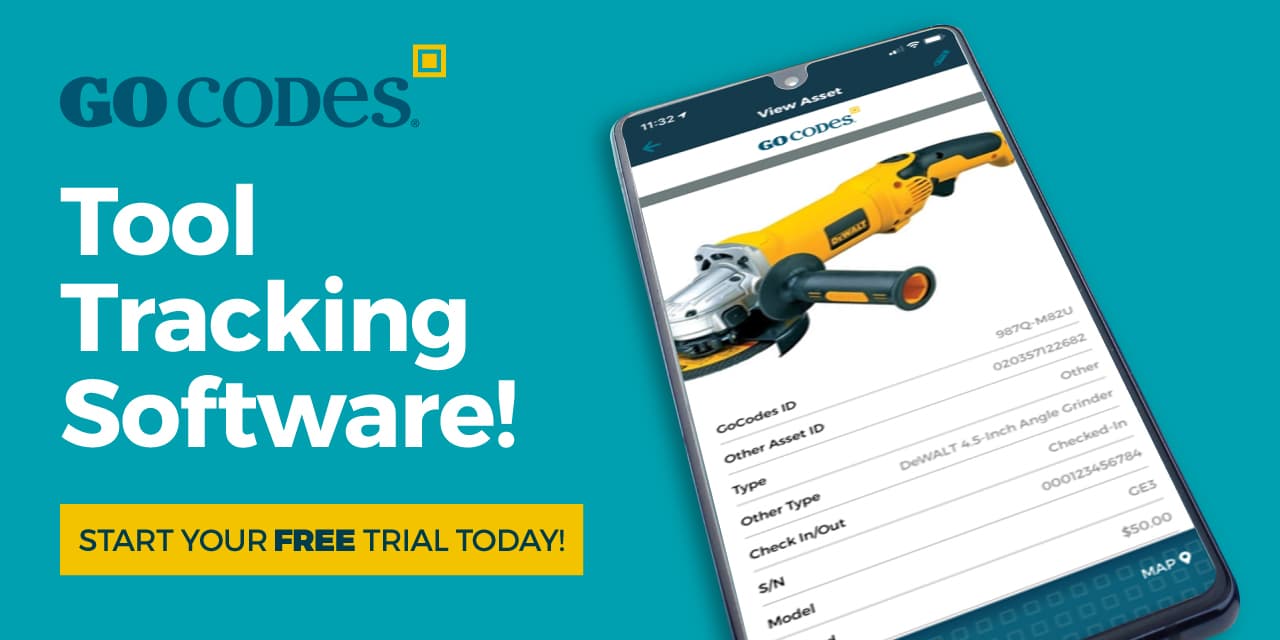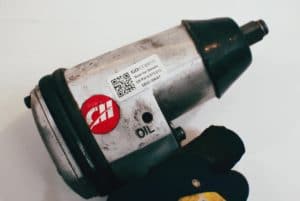Key Takeaways:
- Tracking reliability depends on the number of connected Apple devices nearby.
- AirTags aren’t built to withstand harsh environments or prolonged heavy-duty use.
- They can be easily detected through Apple’s anti-stalking features and quickly disabled.
- You need multiple Apple IDs to manage more than 16 assets.
- AirTags lack business-specific features like telematics, reporting, and API integrations.
When Apple released AirTags, businesses quickly saw potential beyond personal use.
Could these sleek devices be the perfect low-cost solution for asset tracking?
At first glance, it seems so—but the reality is far more complicated.
In this article, we’ll break down five key reasons why AirTags aren’t a reliable choice for commercial asset tracking, and what to consider instead.
In this article...
No Real-Time Tracking Capabilities
AirTags don’t have real-time tracking capabilities—so they aren’t reliable enough for commercial asset management.
Hold up, then how come AirTags help people track their stolen bicycles or keys?
It’s all thanks to the Apple ecosystem.
AirTags are Bluetooth-enabled homing beacons that ensure ongoing tracking and continuous location updates thanks to the Find My Network.
Here’s a short explanation of how this works:
Source: Max’s Tech on Youtube
Simply put, Apple’s trackers rely on millions of nearby Apple devices to relay their exact location, allowing you to track a tagged asset even without direct internet access.
There’s one catch, though.
AirTags can only transmit location data when they come into contact with an Apple device.
As a result, a lack of nearby devices immediately impacts tracking accuracy.
For instance, due to a lack of updates between two connecting flights, one AirTag user mistakenly believed their luggage had been left behind.

Source: Reddit
If losing track of a suitcase full of personal belongings is stressful, imagine the risk when monitoring multiple assets worth tens of thousands of dollars.
And consider this: How many Apple devices are present at remote construction sites?
One study comparing AirTags with Galaxy SmartTags and Tile trackers found that performance varied significantly.
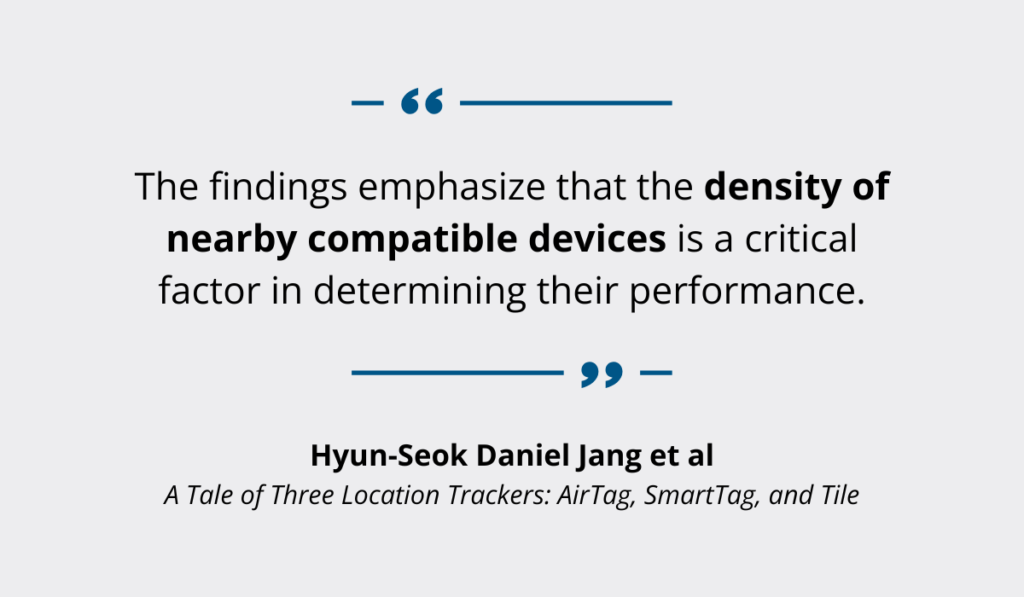
Illustration: GoCodes Asset Tracking / Quote: Arxiv
Despite Apple’s extensive device network—the largest of the three—AirTags still struggled in areas with few nearby devices.
This means hours or even days could pass without a location update, making these devices unreliable for critical asset tracking.
On the other hand, precise real-time tracking delivers multiple benefits, helping businesses:
- Optimize operations
- Minimize downtime
- Enhance security
The only way to achieve this reliably is with professional GPS trackers that offer global coverage and function independently of third-party devices.
Research shows that most businesses recognize this need and are already on board, with adoption rates rising as fleet sizes grow.
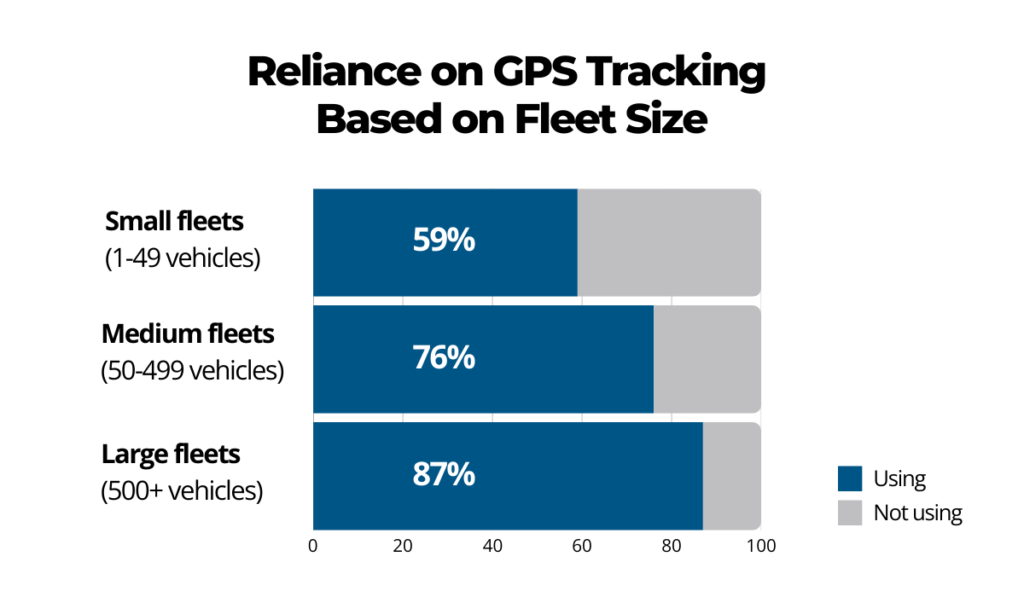
Illustration: GoCodes Asset Tracking / Data: Automotive Fleet
Even the smallest fleets report a 59% adoption rate, cementing the role of GPS in construction fleet tracking and similar industries.
Let’s face it.
Without real-time tracking, AirTags simply can’t meet the demands and objectives of today’s fast-moving businesses.
Easily Tampered With
AirTags won’t provide sufficient protection for your assets because they’re surprisingly easy to tamper with.
Since these trackers are no bigger than a quarter, you’d think that their discreet size gives them an advantage over more robust GPS trackers.
However, you would be wrong.
Although AirTags’ small size makes them easy to hide, they lack secure mounting options, making them more vulnerable to tampering or complete removal.
AirTags also fall short in theft prevention because Apple’s iOS tracking alerts notify iPhone users when an unknown AirTag has been moving with them for an extended period.
While this feature was designed to prevent stalking, it also makes it easier for thieves to detect and remove AirTags.
Android users can also download Tracker Detect to manually scan for AirTags, and even get quick instructions on how to disable them completely.

Source: Google Play
As a result, would-be thieves only need a smartphone to do a quick sweep for AirTags on vehicles or other equipment, making them unreliable for asset protection.
Since many tech enthusiasts and business owners are aware of these shortcomings, there are plenty of videos that give instructions on how to hide AirTags.
For example, the video below provides a step-by-step guide on how to make an improvised AirTag container and make removal more difficult.
Source: DIY Geek on Youtube
As one commenter points out, using more secure metal containers significantly reduces the signal’s already limited range, creating additional problems.
With all this in mind, it’s clear that AirTags are highly unsuitable for commercial asset tracking.
Luckily, battery-powered GPS trackers provide a far superior option for your most valuable assets because they are:
- Significantly harder to detect
- Cannot be easily disabled without physical removal from the vehicle
GPS trackers aren’t immune to tampering, but there are more strategies you can use to prevent tampering.
Plus, many come equipped with robust anti-theft features like tamper alerts.

Source: Teltonika
And for even greater protection, you can use hardwired GPS trackers.
Although they require professional installation and come at a higher cost, these trackers are nearly impossible to disable without direct access to the vehicle’s wiring.
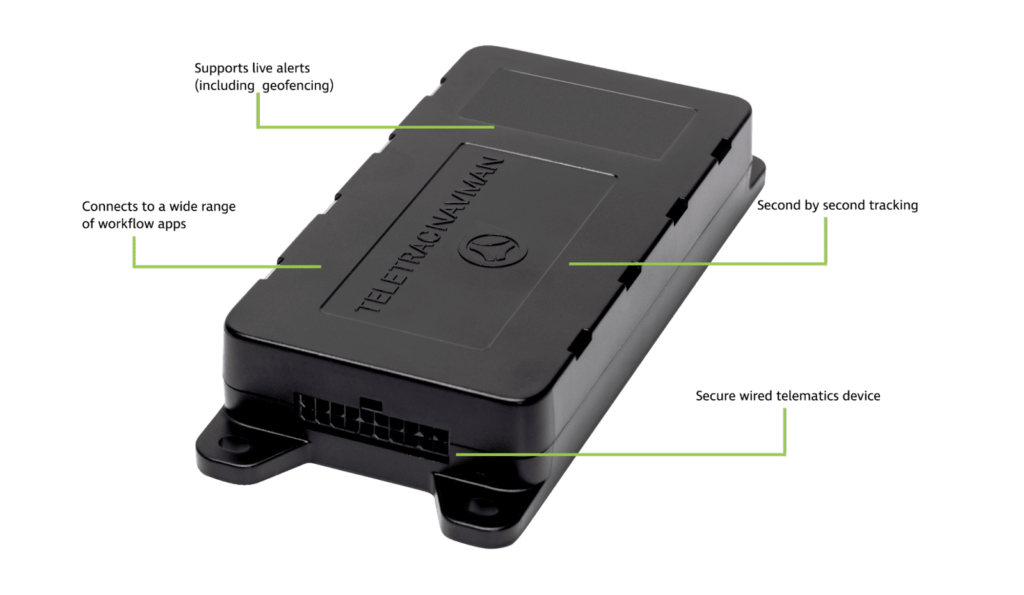
Source: Teletrac Navman
Many also integrate with fleet management systems, offering advanced security and operational insights.
To sum up, AirTags simply don’t offer the security, durability, or real-time tracking capabilities needed for commercial asset protection.
Not Built for Harsh Environments
AirTags aren’t designed to withstand harsh conditions because they were built primarily for personal use, not industrial environments.
It’s hard to picture these sleek trackers anywhere near a muddy construction site or attached to vehicles working in rough terrain.
Construction equipment is constantly exposed to dust, water, impacts, and extreme temperatures.
As such, companies looking to enhance their asset tracking must factor in different environmental conditions, from heavy rain and freezing temperatures to extreme heat.

Source: GoCodes Asset Tracking
AirTags are made of sturdy plastic and stainless steel, promising moderate splash, water, and dust resistance and performing surprisingly well in several tests conducted by curious users.
But what about prolonged exposure to the elements?
The trackers’ performance is affected by temperature and weather, shortening battery life or causing them to shut off completely.
Buying batteries with an extended temperature range could improve the situation somewhat, but there’s still no solution for one major obstacle.
As cited on the Apple Community forum, AirTags aren’t waterproof.
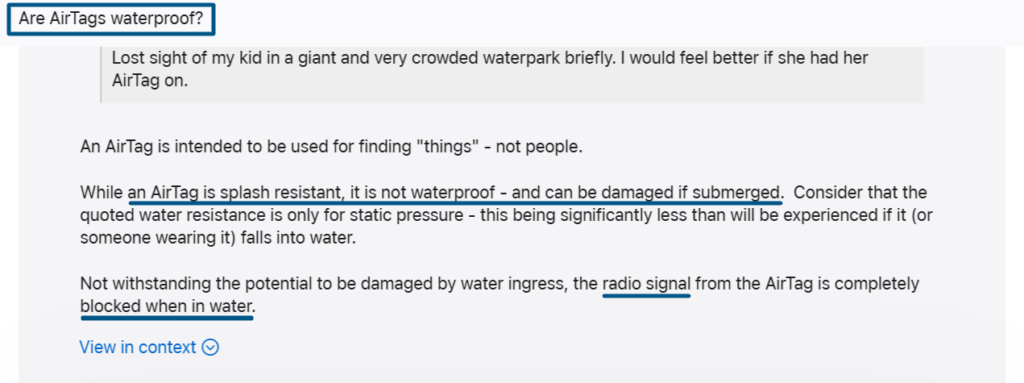
Source: Apple
Even more importantly, the loss of signal hinders operations drastically.
Unlike AirTags, purpose-built GPS trackers are designed for rugged construction environments, offering superior durability and water resistance.
With GoCodes Asset Tracking, you also have versatile tracking options that are tailored to your asset’s nature and value.
Our customizable QR code labels are ideal for tools and non-powered assets, available in a variety of materials:
- Polyester tags
- Aluminum foil labels
- Rugged metal labels
The industrial-strength adhesives on these labels make them extremely difficult to remove, offering protection against both weather damage and theft.
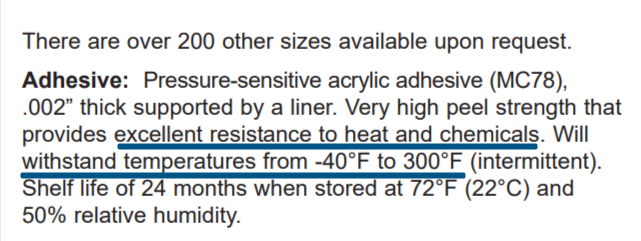
Source: GoCodes Asset Tracking
That said, metal tags remain the most reliable choice for long-term outdoor use and harsh conditions.
You can choose between aluminum foil labels which are corrosion-resistant and fit curved surfaces or anodized aluminum tags built to withstand harsh outdoor conditions.
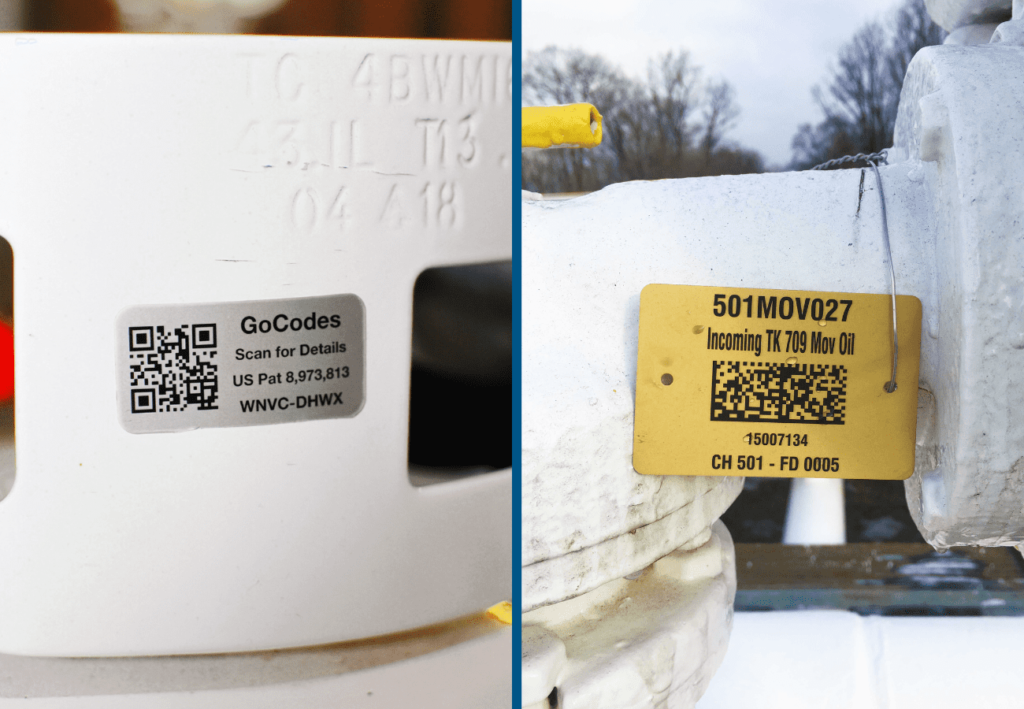
Source: GoCodes Asset Tracking
In short, relying on AirTags simply isn’t practical in demanding environments.
Opting for industrial-grade tracking solutions is your only way to ensure reliable, long-term asset visibility.
Short Battery Life
Another notable challenge of using AirTags for commercial asset tracking is their short battery life.
AirTags use CR2032 coin batteries that can last approximately one year before they need to be replaced.

Source: The Points Guy
What’s worse, Apple’s trackers don’t allow real-time battery level monitoring, only sending alerts when replacement is needed.
But that’s just the beginning of the problem.
Apple’s one-year battery estimate is based on personal use, where AirTags are activated periodically.
An average AirTag user might track misplaced items once every few weeks, but in a commercial setting, frequent tracking demands will drain batteries much faster, also making it difficult to plan for replacements.
Such unpredictability would easily disrupt operations and even increase the risk of asset loss.
And while CR2032 batteries are cheap and relatively easy to replace, costs add up fast when you’re managing replacements across a large fleet—especially when factoring in labor time.
Are AirTags really worth the hassle when better alternatives exist?
Consider real-time GPS trackers that ensure uninterrupted tracking over longer periods, despite heavy-duty use.
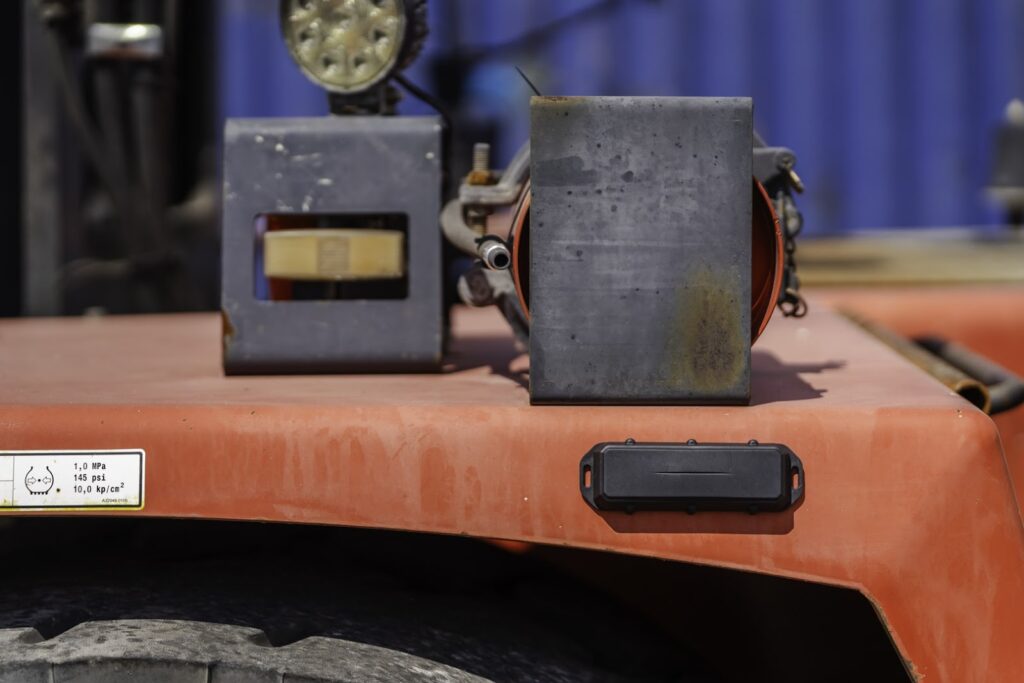
Source: GoCodes Asset Tracking
Business tracking solutions are equipped with rechargeable long-life batteries and offer remote battery status monitoring, helping you minimize operational risks and plan for replacement effectively.
For instance, you could easily schedule battery replacements during routine maintenance.
However, with up to 10 years of battery life, you won’t have to worry about trackers and your critical assets for a long time.

Source: GoCodes Asset Tracking
Ultimately, relying on AirTags for commercial asset tracking means dealing with unpredictable battery life, lack of remote monitoring, and unexpected downtime.
This makes them a poor choice for any construction company that values efficiency and reliability.
Lack of Business-Specific Features
Unlike purpose-built asset tracking solutions, AirTags lack essential functionalities such as historical location logs, geofencing, and motion alerts.
These are the features that businesses rely on for security and operational efficiency, but even if we disregard them, AirTags simply don’t fit into a business ecosystem.
Apple’s Find My network is designed for personal item tracking, not large-scale asset management.
That’s why it limits tracking to 15 devices per Apple ID.
Highly impractical for businesses managing dozens or hundreds of assets, wouldn’t you say?
While workarounds like creating multiple Apple IDs exist, they aren’t a sustainable solution.
They introduce new inefficiencies, making it harder to:
- Centralize data
- Streamline workflows
- Integrate with existing asset management systems
Limited integration with existing business systems and workflows is particularly problematic, especially when we consider recent findings.
Namely, Userlane’s research identifies integration difficulties as one of the top reasons behind failed digital transformation projects.
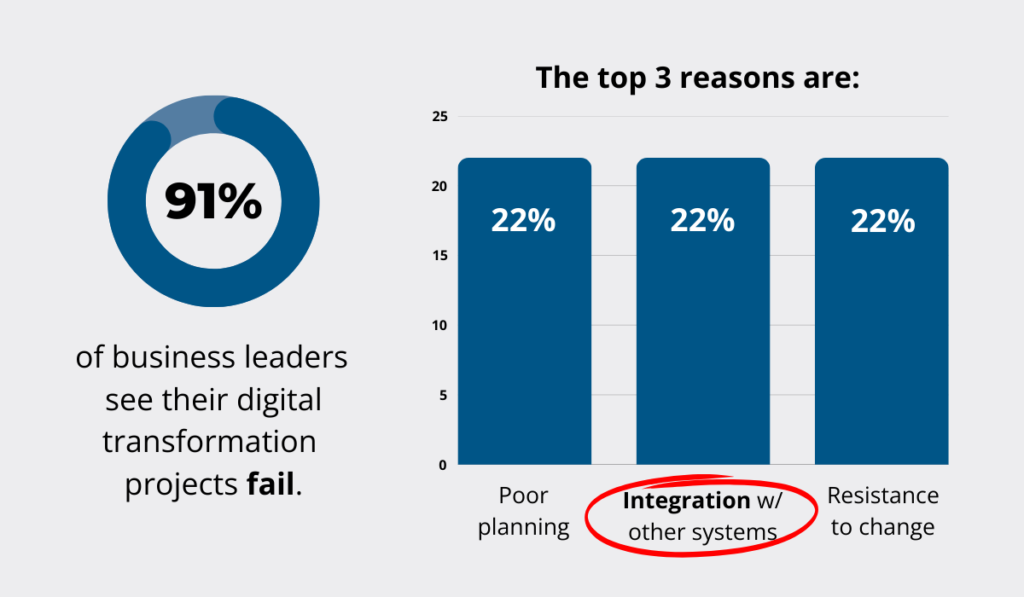
Illustration: GoCodes Asset Tracking / Data: Userlane
Even if full-scale digital transformation isn’t your key objective, these limitations serve as another compelling argument against using AirTags for long-term business tracking.
Fortunately, choosing trackers based on best asset tagging practices sidesteps this integration issue.
Companies that invest in enterprise-level tracking devices ensure efficiency at scale while bolstering security and gaining critical insights that build a competitive advantage.
Consider geofence-enabled GPS trackers that provide an extra layer of security and automation that AirTags simply don’t offer.
By creating geofences or virtual boundaries around job sites or storage areas you will be immediately alerted if an asset moves outside the designated area.
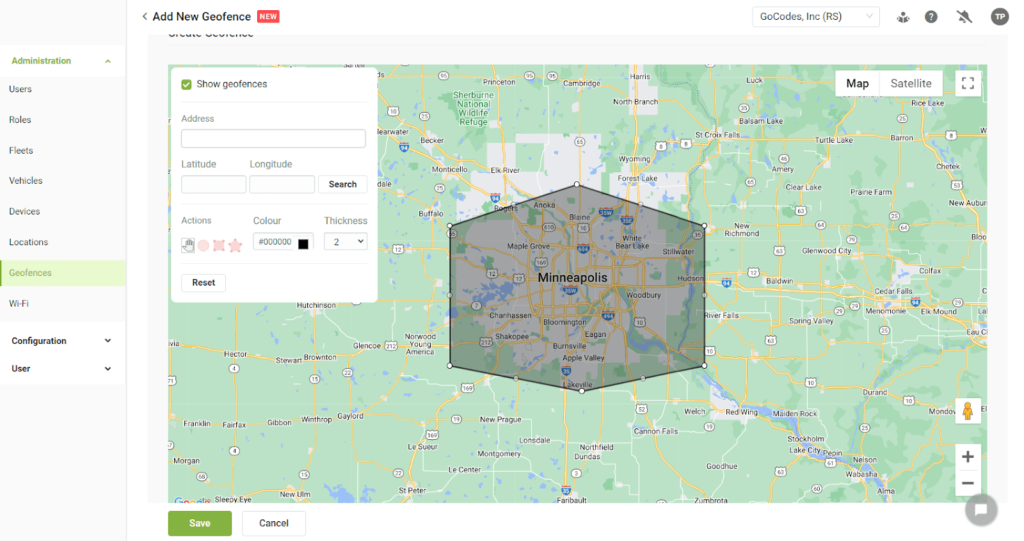
Source: GoCodes Asset Tracking
Setting up a geofence takes less than three minutes, but this small effort reduces the risk of theft and improves asset recovery for months and years to come.
Beyond security, smart tracking solutions connect seamlessly with fleet and inventory management systems, offering complete visibility into equipment movement, usage, and condition.
An intuitive dashboard compiles key asset and driver performance metrics, as well as safety analytics, helping managers identify inefficiencies and use data to streamline operations.
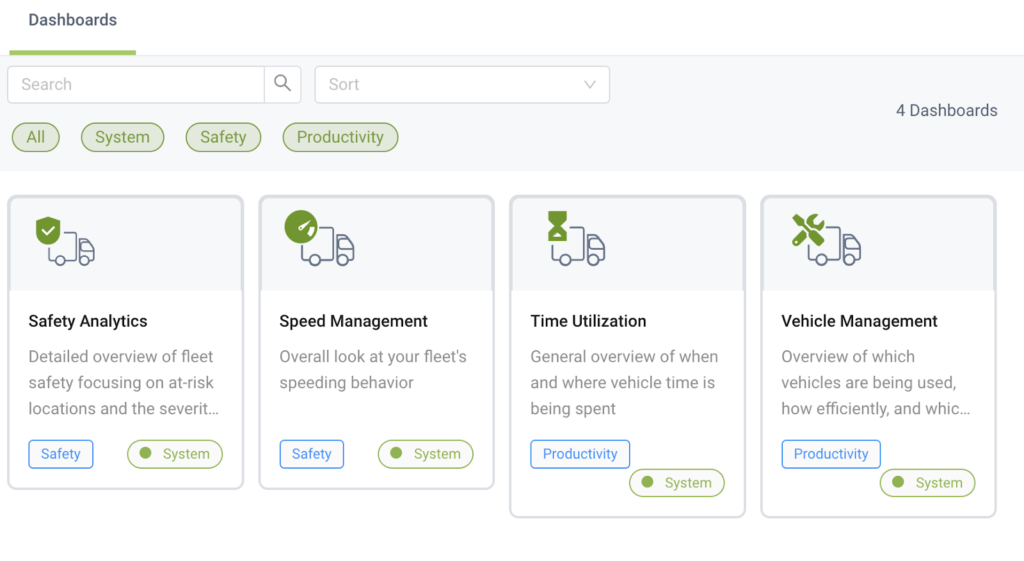
Source: GoCodes Asset Tracking
These combined capabilities don’t just improve tracking—they transform how businesses manage their assets.
Instead of working around limitations, businesses can eliminate the blind spots and operate proactively, ensuring better security, efficiency, and long-term growth.
Conclusion
AirTags aren’t built for commercial asset tracking.
There’s a reason these affordable trackers excel in personal use—they simply weren’t designed for business demands!
Without real-time visibility, durability, or business-grade features, relying on AirTags for tracking will erode efficiency and leave your operations vulnerable to loss and security risks.
The good news?
Investing in the right technology gives your construction business the reliability, insights, and control it needs, so there’s no reason to settle for workarounds.
Upgrade to a dedicated asset management system today to streamline workflows and protect both your assets and margins.


